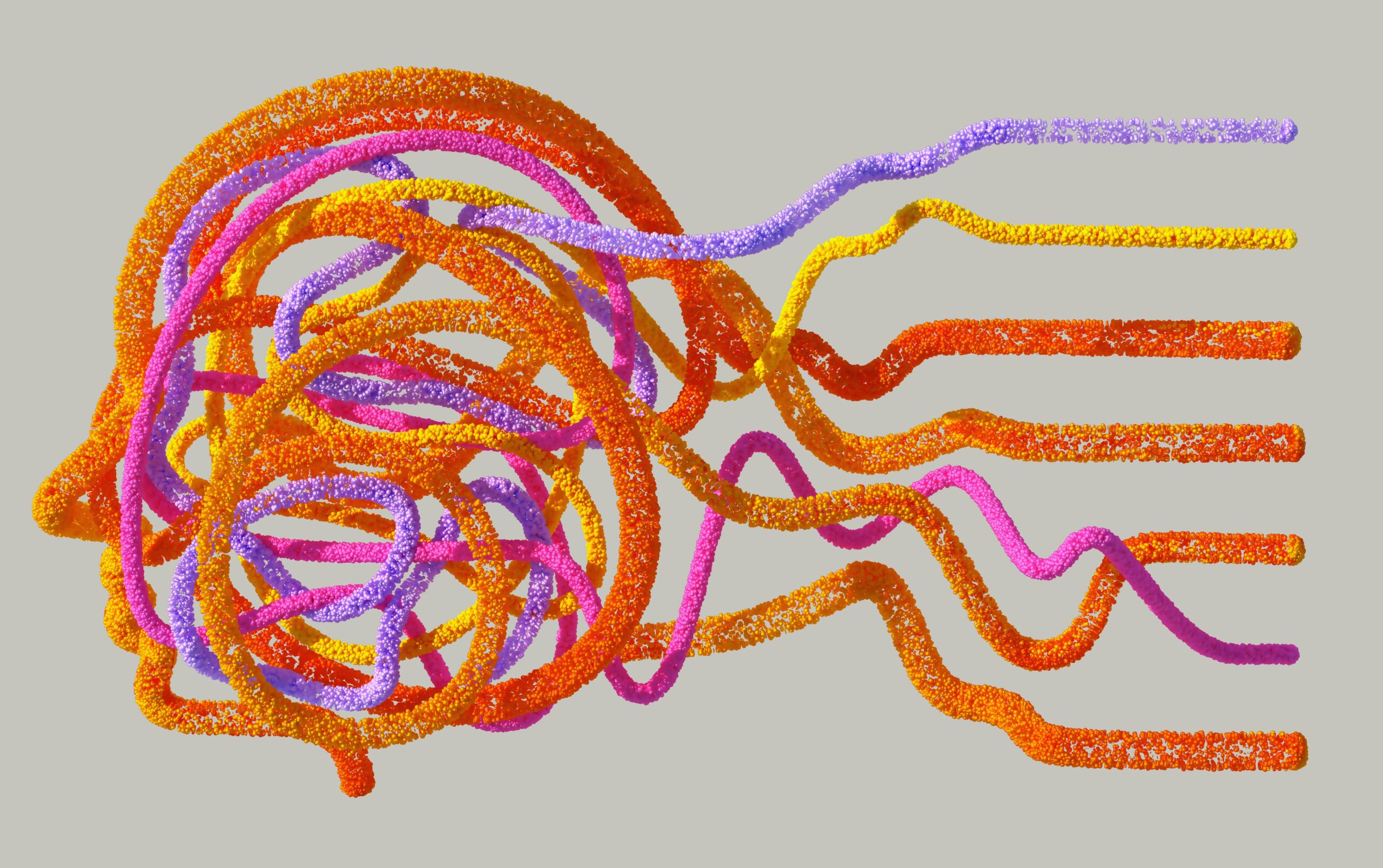The convergence of artificial intelligence and neuroscience represents one of humanity’s most ambitious scientific endeavors, promising to unlock unprecedented understanding of consciousness while raising profound ethical questions.
As we stand at this technological crossroads, the fusion of computational systems with biological neural networks is no longer confined to science fiction. Researchers worldwide are developing brain-computer interfaces, neural implants, and AI systems that learn from brain activity patterns. This remarkable progress forces us to confront challenging questions about human identity, autonomy, privacy, and the very nature of what it means to be human in an era where minds and machines increasingly intertwine.
🧠 The Neurotechnology Revolution: Where We Stand Today
Modern neurotechnology has evolved dramatically over the past decade. Brain-computer interfaces (BCIs) now enable paralyzed individuals to control robotic limbs with their thoughts alone. Deep learning algorithms can decode brain signals to predict intentions, reconstruct visual experiences, and even translate neural activity into speech. Companies like Neuralink, Synchron, and Kernel are racing to develop increasingly sophisticated neural interfaces that promise to enhance human cognitive capabilities.
The integration of AI with neuroscience operates on multiple levels. Machine learning algorithms help neuroscientists analyze massive datasets of brain activity, identifying patterns invisible to human researchers. Conversely, insights from neuroscience inspire new AI architectures that more closely mimic biological neural networks. This bidirectional relationship accelerates progress in both fields, creating a powerful feedback loop of innovation.
Current applications range from medical treatments for neurological conditions like Parkinson’s disease and epilepsy to experimental cognitive enhancement technologies. Researchers have demonstrated systems that can restore movement to paralyzed limbs, suppress tremors, and even modulate mood through targeted neural stimulation guided by AI algorithms.
The Promise: Transformative Benefits on the Horizon 🚀
The potential benefits of AI-neuroscience integration extend across multiple domains. In healthcare, these technologies offer hope for millions suffering from neurological disorders. AI-powered brain interfaces could restore communication abilities to individuals with locked-in syndrome, return mobility to those with spinal cord injuries, and provide new treatments for psychiatric conditions resistant to conventional therapies.
Beyond medical applications, cognitive enhancement represents another frontier. Neural interfaces combined with AI could augment human memory, accelerate learning, and enable direct brain-to-brain communication. Imagine downloading skills directly to your brain, accessing information without external devices, or communicating complex ideas through direct neural transmission.
Educational and Professional Implications
The educational landscape could transform fundamentally through neurotechnology. AI systems analyzing real-time brain activity could personalize learning experiences with unprecedented precision, identifying exactly when students grasp concepts or experience confusion. This could optimize educational efficiency and accessibility, making expertise more democratically available.
Professional domains might see similar revolutions. Surgeons could access relevant medical knowledge instantaneously during procedures. Engineers could visualize complex three-dimensional designs directly through neural interfaces. The potential productivity gains and creative possibilities appear limitless.
⚖️ The Ethical Minefield: Navigating Uncharted Territory
However, these promising developments bring equally profound ethical challenges. The fusion of minds and machines forces us to reconsider fundamental concepts about personhood, autonomy, privacy, and human dignity. Each technological advance opens new ethical questions that society must address before widespread adoption.
Privacy and Mental Autonomy
Perhaps the most immediate concern involves neural privacy. If AI systems can read and interpret brain activity, who owns that data? Current legal frameworks protecting privacy never anticipated technologies capable of directly accessing thoughts and emotions. Brain data represents the most intimate information imaginable—our beliefs, desires, memories, and identity itself.
The risk of unauthorized access to neural data is profound. Malicious actors could potentially extract sensitive information, manipulate thoughts, or even alter personality traits. Without robust protections, brain-computer interfaces could become surveillance tools of unprecedented invasiveness. Companies developing neurotechnology must implement encryption, access controls, and transparency measures exceeding any previous standard.
Mental autonomy raises equally troubling questions. If AI systems can influence neural activity, where does the boundary lie between therapeutic intervention and coercive manipulation? Technologies designed to treat depression might also suppress dissent. Systems enhancing focus could inadvertently constrain creative thinking. Preserving individual agency while enabling beneficial interventions requires careful ethical frameworks.
Identity and Authenticity Concerns
The integration of AI with human cognition challenges our understanding of personal identity. If artificial systems augment or replace biological neural processes, are the resulting thoughts genuinely “ours”? This question transcends philosophical speculation—it has practical implications for moral and legal responsibility.
Consider someone whose decision-making involves AI-assisted neural implants. If they commit a crime, who bears responsibility—the individual, the AI system, or the technology developer? Traditional concepts of mens rea (criminal intent) assume unaugmented human cognition. Hybrid human-AI minds complicate these assumptions fundamentally.
Authenticity concerns extend to creativity and achievement. Would art created with AI-enhanced neural capabilities be genuinely creative? Would academic achievements aided by cognitive enhancement technologies represent authentic individual accomplishment? These questions affect how we value human endeavors and recognize merit.
🌍 Social Justice and Access Inequality
The potential for neurotechnology to exacerbate social inequality represents another critical ethical concern. If cognitive enhancement becomes available, it will likely be expensive initially, accessible only to wealthy individuals and institutions. This could create a cognitive divide, where enhanced individuals enjoy overwhelming advantages in education, employment, and social influence.
History demonstrates that transformative technologies often deepen existing inequalities before becoming democratized. Healthcare disparities mean that even therapeutic neurotechnologies might remain unavailable to marginalized communities. Without deliberate intervention, AI-neuroscience integration could create a biological aristocracy, undermining fundamental principles of equality and opportunity.
Global Disparities and Technological Colonialism
International dimensions of access inequality deserve attention. Neurotechnology development concentrates in wealthy nations with advanced research infrastructure. If these technologies provide significant advantages, the global power imbalance could intensify dramatically. Developing nations might face technological dependence on countries controlling neurotechnology platforms.
This dynamic mirrors historical patterns of colonialism, where technological advantages enabled domination and exploitation. Preventing neurotechnological colonialism requires international cooperation, knowledge sharing, and commitment to equitable access. Organizations like the World Health Organization and UNESCO must develop frameworks ensuring these technologies benefit humanity broadly.
Regulatory Challenges and Governance Frameworks 📋
Governing AI-neuroscience integration presents unprecedented regulatory challenges. Current regulations weren’t designed for technologies that blur boundaries between medical devices, consumer electronics, and cognitive enhancement tools. Comprehensive governance frameworks must address safety, efficacy, privacy, and ethical concerns while remaining flexible enough to accommodate rapid technological evolution.
Regulatory approaches vary internationally. The European Union has proposed strict regulations on AI systems, including those interfacing with humans. The United States maintains a more fragmented approach, with different agencies overseeing medical devices, consumer products, and research ethics. China invests heavily in neurotechnology while maintaining centralized oversight aligned with national priorities. These divergent approaches create challenges for global companies and raise concerns about regulatory arbitrage.
Establishing Safety Standards
Safety represents the most immediate regulatory priority. Neural interfaces directly interact with delicate brain tissue, and errors could cause permanent damage. AI systems controlling neural stimulation must demonstrate exceptional reliability. Long-term effects of chronic neural interface use remain largely unknown, requiring extensive research and monitoring.
Testing protocols for neurotechnology must balance thoroughness with innovation speed. Overly restrictive requirements might delay beneficial treatments, while inadequate testing could expose users to unacceptable risks. Regulatory agencies need resources, expertise, and adaptive frameworks to make these judgments effectively.
🤝 Building Ethical AI-Neuroscience: Principles and Practices
Addressing these challenges requires proactive development of ethical principles and practices. The neurotechnology community must embrace responsibility for societal implications, engaging diverse stakeholders in shaping this field’s future. Several key principles should guide ethical development:
- Beneficence and Non-Maleficence: Technologies should maximize benefits while minimizing harm, with robust safety testing and risk mitigation strategies.
- Respect for Autonomy: Users must provide informed consent, maintain control over their neural data, and retain the right to disconnect or remove neural interfaces.
- Justice and Equity: Development should prioritize equitable access, preventing cognitive enhancement from becoming a privilege of the wealthy.
- Transparency: AI algorithms interfacing with brains must be explainable, with clear information about how they process neural data and influence cognition.
- Privacy Protection: Neural data requires the strongest possible protections, with encryption, access controls, and legal safeguards exceeding current standards.
Stakeholder Engagement and Public Dialogue
Ethical neurotechnology development requires broad stakeholder engagement. Scientists, ethicists, policymakers, patient advocates, and the general public must participate in ongoing dialogue about appropriate uses, necessary safeguards, and societal priorities. Public understanding remains limited, creating risks of both excessive fear and naive enthusiasm.
Educational initiatives can help society engage thoughtfully with these technologies. Museums, science centers, and media organizations should explain neurotechnology developments accessibly, highlighting both opportunities and concerns. Academic institutions should integrate neuroethics into curricula across disciplines, preparing future professionals to navigate this complex landscape.
The Path Forward: Balancing Innovation and Caution ⚡
Moving forward requires balancing innovation’s benefits against ethical concerns. Excessive caution could delay transformative medical treatments, but reckless development might cause irreversible harm. Finding this balance demands ongoing assessment, adaptive governance, and commitment to ethical principles.
International cooperation will prove essential. Neurotechnology transcends national boundaries, and harmonized standards can prevent races to the bottom while facilitating beneficial research. International bodies should convene experts to develop consensus guidelines, share best practices, and coordinate regulatory approaches.
Research Priorities and Funding
Funding agencies should prioritize research addressing ethical and social dimensions alongside technical development. Understanding long-term effects of neural interfaces, developing robust privacy protections, and studying societal impacts deserve substantial resources. Currently, ethics research receives minimal funding compared to technical development—a balance that must shift.
Interdisciplinary collaboration should be encouraged and rewarded. The most important insights often emerge at the intersection of neuroscience, computer science, ethics, law, and social sciences. Funding structures, academic incentives, and professional recognition should support truly interdisciplinary work.

🔮 Envisioning Responsible Futures
The fusion of AI and neuroscience will profoundly shape humanity’s future. Whether this transformation enhances human flourishing or creates new forms of inequality and control depends on choices we make today. By engaging proactively with ethical challenges, developing robust governance frameworks, and maintaining commitment to human dignity and equity, we can guide this technology toward beneficial outcomes.
Success requires vigilance, humility, and ongoing dialogue. We must acknowledge uncertainty about long-term consequences while making decisions with limited information. Adaptive governance, continuous ethical reflection, and willingness to modify course based on emerging evidence will be crucial.
The ethical frontiers explored here represent just the beginning. As technologies advance, new dilemmas will emerge, requiring continued engagement from diverse perspectives. The conversation about AI-neuroscience ethics must be ongoing, inclusive, and responsive to technological evolution and societal values.
Ultimately, bridging minds and machines offers extraordinary possibilities for treating disease, expanding human capabilities, and deepening our understanding of consciousness. Realizing these benefits while protecting human dignity, autonomy, and equality represents perhaps the defining challenge of our era. By confronting ethical frontiers thoughtfully and courageously, we can shape a future where technology enhances rather than diminishes our humanity. The choices we make now will echo through generations, determining whether the fusion of minds and machines becomes a triumph of human ingenuity or a cautionary tale of technological hubris. 🌟
Toni Santos is a cognitive storyteller and cultural researcher dedicated to exploring how memory, ritual, and neural imagination shape human experience. Through the lens of neuroscience and symbolic history, Toni investigates how thought patterns, ancestral practices, and sensory knowledge reveal the mind’s creative evolution. Fascinated by the parallels between ancient rituals and modern neural science, Toni’s work bridges data and myth, exploring how the human brain encodes meaning, emotion, and transformation. His approach connects cognitive research with philosophy, anthropology, and narrative art. Combining neuroaesthetics, ethical reflection, and cultural storytelling, he studies how creativity and cognition intertwine — and how science and spirituality often meet within the same human impulse to understand and transcend. His work is a tribute to: The intricate relationship between consciousness and culture The dialogue between ancient wisdom and neural science The enduring pursuit of meaning within the human mind Whether you are drawn to neuroscience, philosophy, or the poetic architecture of thought, Toni invites you to explore the landscapes of the mind — where knowledge, memory, and imagination converge.




